
Posted by Shivam Singh
on 22nd Feb, 2020
Visited in Nov, 2019
A major tourist spot located in the state of Rajasthan in India, Jaisalmer is said to be founded by Raja Rawal Jaisal, a Bhatti Rajput ruler, in 1156 AD.
Nicknamed “The Golden City” due to the yellow sandstone used in the architecture of both the fort and the town below. Jaisalmer being a desert region, is prone to extremes temperature, which varies greatly from day to night in both summer and winter.
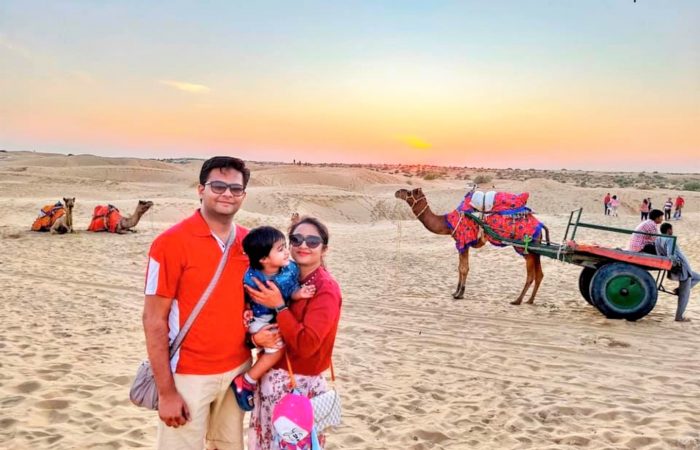
The maximum summer temperature is around 49 °C while the minimum is 25 °C while in winter max around 23 °C and min 5 °C.
The length of the international border attached to Jaisalmer District is 464 km. Due to this border sharing with Pakistan, it serves as a major Indian Army base. You will find men-in-uniform, army trucks and army camps all over the city.
Around 50 Kilometers from Jaisalmer, a popular tourist base is located in Thar Desert, called Sam Sand Dunes, which is famous for desert camping and safari along with evening cultural activities.
The best time to visit Sam or even Jaisalmer is from October to March as in the remaining months, all the camps are closed and only few camel/jeep riders will be available in Sam. Many travelers love to attend the evening musical program at Sam (at the desert camps), you won’t be able to attend them in summer and monsoon months.
I travelled to Jaisalmer in November 2019 from New Delhi via Bikaner while on a circular Road Trip (will explain about Road-Trip in another blog) of Rajasthan with my family in my own car. Started early morning from Bikaner, reached Sam Sand Dunes directly in afternoon and stayed there for 1 night in a pre-booked tent house. Next day after early morning Desert Safari, reached Jaisalmer and visited multiple attractions of the city including the fort.
How You Can Reach Jaisalmer
Jaisalmer is around 790 KMs from New Delhi and 590 KMs from Jaipur.
It has its own airport and railway station both connecting various cities of India, but limited trains and flights are available.
As of Feb-2020, daily two train runs from New Delhi to Jaisalmer which takes around 18 hours and a weekly Tuesday train which takes 13 hours.
As of Feb-2020, one direct SpiceJet flight (can be more in future) from New Delhi is available, few others are with one stop.
Several other Indian cities are also connected.
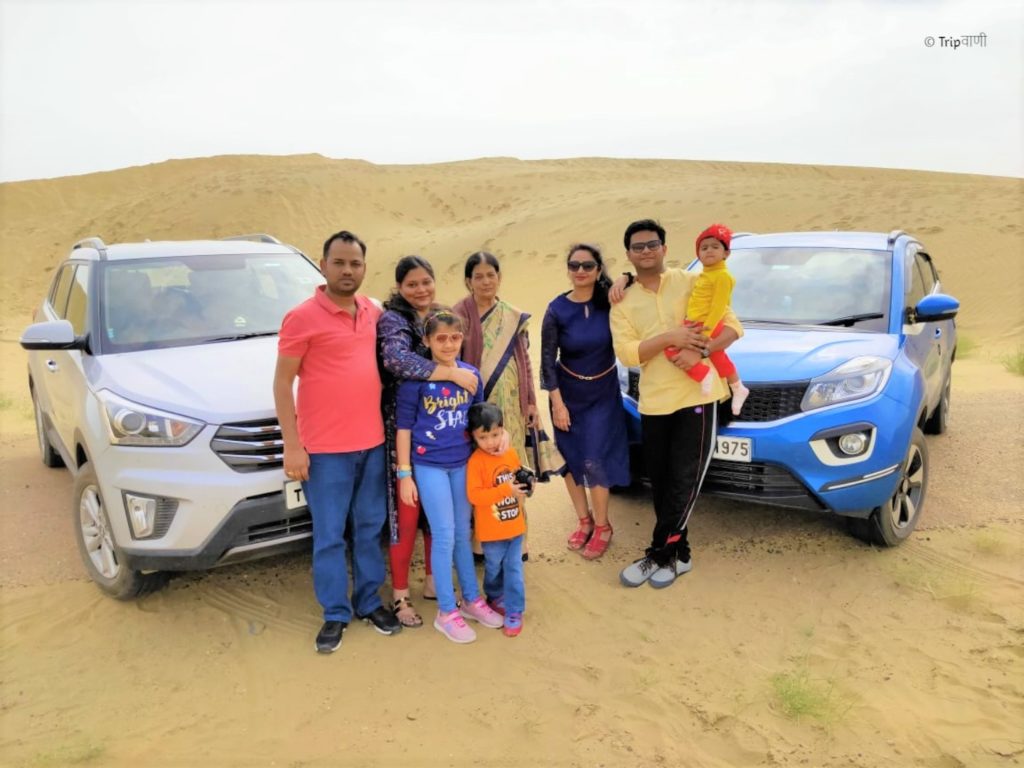
You can also go via road which will take around 14 hours from New Delhi or better to do a break journey in Bikaner. Plan wisely, take help from me if needed.
3 Days Itinerary in Sam & Jaisalmer
Lets start the trip from Sam Sand Dunes.
Day-1
If you are arriving Jaisalmer in the afternoon anytime before 2 PM, you should proceed to Sam Sand Dunes straight-away on the first day itself. Our plan was also the same, as we took a 2 day break in Bikaner (while arriving from New Delhi), and started from Bikaner towards Jaisalmer around 9:00 AM.
1. Sam Sand Dunes: Located around 50 KM from Jaisalmer city, this place is a must visit if you are in love with deserts and sands. The road leading to this place is maintained by Indian Armed Forces and are in top shape.
This is one of the most authentic desert dune site in whole India, where you will find 3 – 6 meter tall sand dunes and can stay in one of many desert camps, built in 2-3 km radius of sand dunes. Sam is a village nearby around 5 KMs from camp area, hence the name.
This is the closest place from where you can loose yourself in ‘the Great Thar Desert’. Sam has a truly magnificent stretch of sweeping dunes, with little or no vegetation.
In the month of February/March, this whole place turns into a cultural hub. The desert festival organized amid these dunes is the showcase of Rajasthani culture as a whole. Open-air cultural extravaganzas, puppet shows, folk dance performances, camel races, competitions and general festivities mark this annual event that is held with great pomp and show at the Sam Sand dunes.
I stayed at “Desert Spring Resort” which has bit luxury tents compared to others, paying around INR 4500 for a one night stay in a tent along with evening snacks, buffet dinner and breakfast plus an excellent cultural program. Also it included a camel safari to sunset point. Almost all the resorts should provide you these inclusions. The reason I opted for this resort as there are no other resorts nearby or else you will be hearing loud DJ music till late night from nearby camps.
After we checked-in to the resort at 4:00 PM, they asked to freshen up and get ready for camel/camel-cart ride to sunset point. At the sunset point, they have arrangement of tea/coffee along with some folk music. Later in the evening they have cultural programs at one of the open auditoriums. Veg/non-veg snacks were served on our pre-reserved seats during the show, followed by buffet dinner.
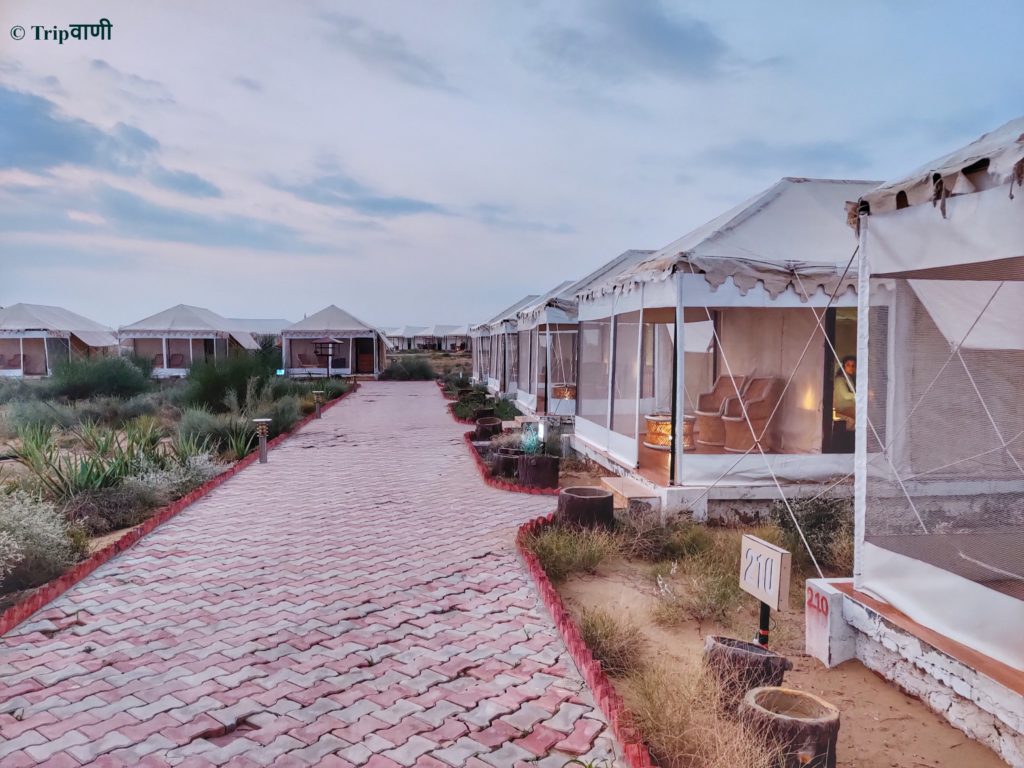
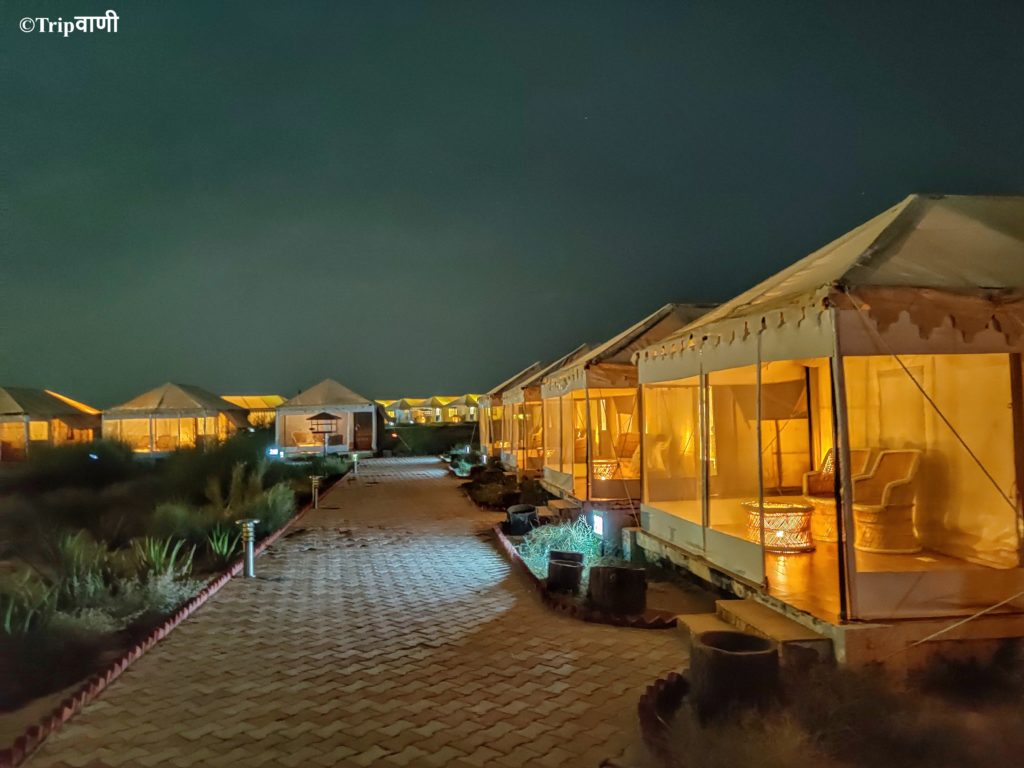
Day-2 :
We talked to our camel safari guy and he arranged for early morning Desert Jeep Safari. I paid 1200 rupees for the Jeep Safari. If you want to see sunrise, inform your safari driver one night before while booking and he will pick you at 5:45 AM for a 90 minutes fun in the desert. If you are tired and feeling lazy, skip the sunrise and simply enjoy the out-of-the-world experience of Jeep Safari (not recommended for old-age people and people having backache issues).
You will also find ATVs and Dirt Bikes at some places if you are interested (ask locals if you cannot find it). I tried ATV rides on the road-side. Also if you are travelling via your own car, proceed towards Sam village and take your car into the sands for some excellent photography (be careful in sands, do not go too deep).
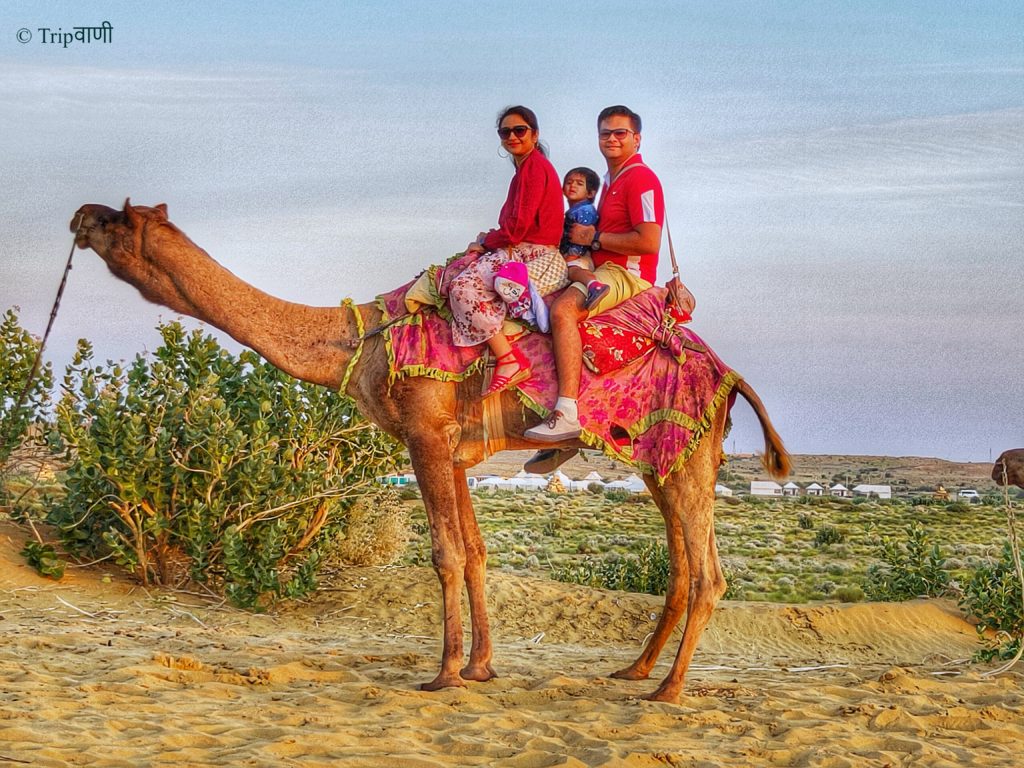
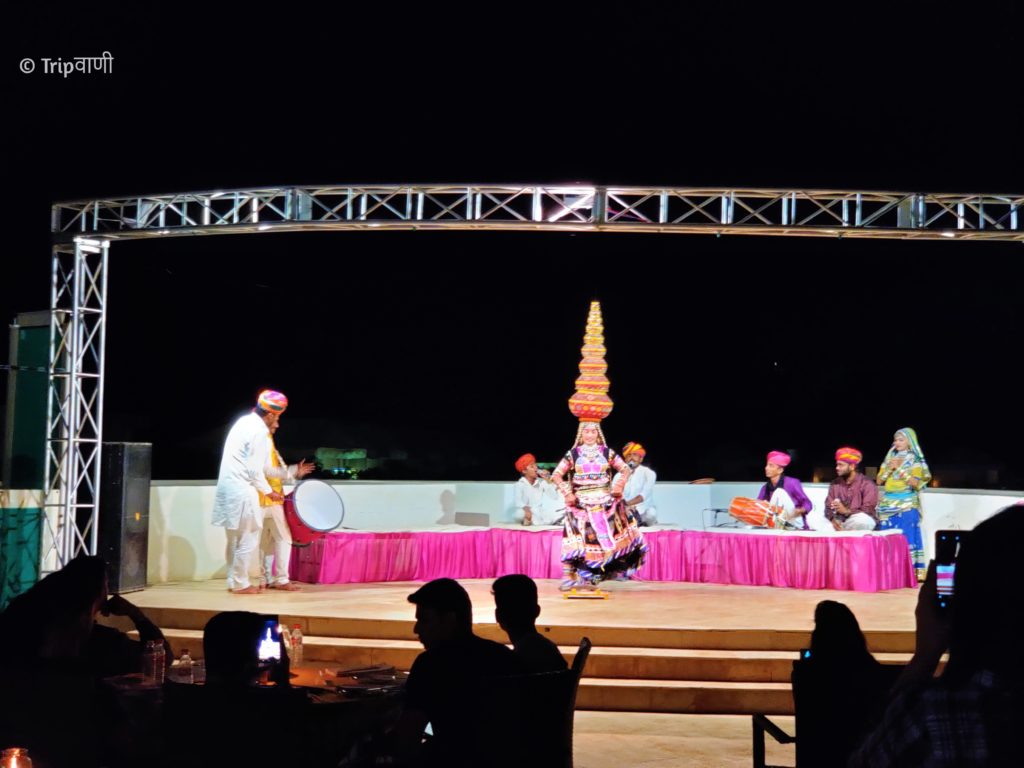
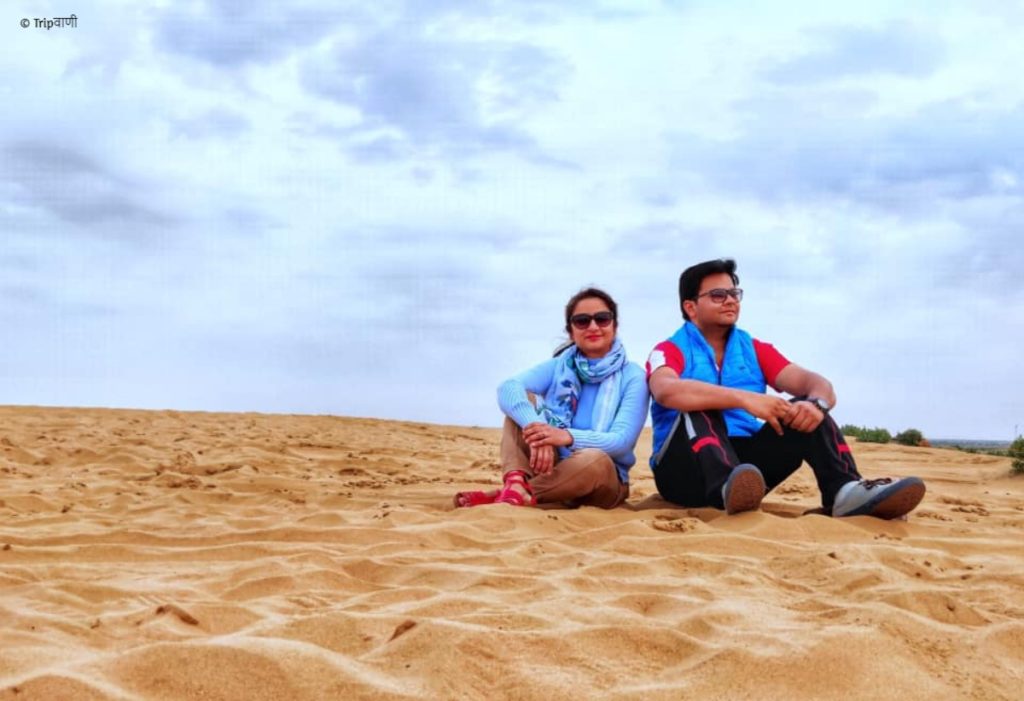
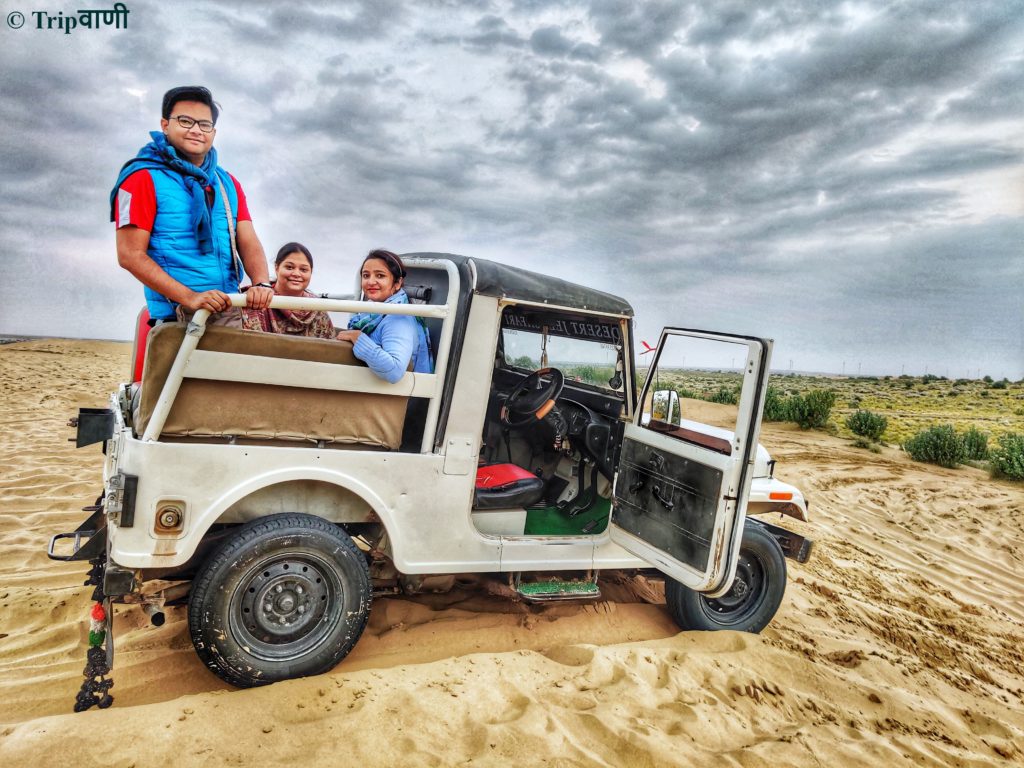
2. Tanot Mata Temple: Around 120 KMs from Sam, this temple lies near the border with Pakistan and is very close to the battle site of Longewala of the Indo-Pakistani war of 1971. It is believed that the Goddess helped India during the battle and hence people come from all over the places to this temple.
Tourists cannot go beyond this temple to see the Indo-Pak border unless one gets the required permissions and documents in advance from District and Military authorities. You can anyways try your luck for an on the spot permission.
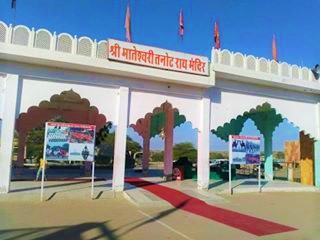
While leaving from Sam, take a left turn as per the direction board on the road, it will take around 2 hours to reach the temple but the drive will be comfortable.
This temple is managed by Border Security Force. You will have a different feeling in and around the temple thinking about the 1971 war.
Return back after temple darshan and proceed towards Jaisalmer city. You will reach Jaisalmer at around 4:00 PM, considering you did an early morning Jeep safari and checked-out from hotel on time. If you are tired, go and check-in to any of the hotel within the city, or else, head directly towards Gadisar lake (details in the end, considering you are tired by now and will take rest at hotel).
Day-3 :: Start your day outing early post breakfast to utilize maximum time. Let’s start from the majestic Jaisalmer Fort. We parked our car at Jaisalmer fort and booked an auto (almost 8 seater) for the whole day in INR 500. You have to take an auto anyhow to reach the main fort area as the walkways are very very steep and crowdy.
3. Jaisalmer Fort: The best part of this fort is that 4000 people still live inside this. It is believed to be one of the very few “living forts” in the world (such as Carcassonne, France).
This Fort is located on the Trikuta Hill in the heart of the Thar Desert. The fort was built in 1156 AD, and the man behind its construction was a Rajput ruler by the name of Rawal Jaisal. It is from this ruler that both the fort and the present city derived their names.
The massive walls of the Jaisalmer Fort are made of yellow sandstone. It is due to the color of these walls that the Jaisalmer Fort is also referred to by the locals as ‘Sonar Quila’, which means ‘Golden Fort’.
We spent around 2 hours at the fort, took a guide who was a retired school teacher. You will find many handicraft shops within the fort premises.
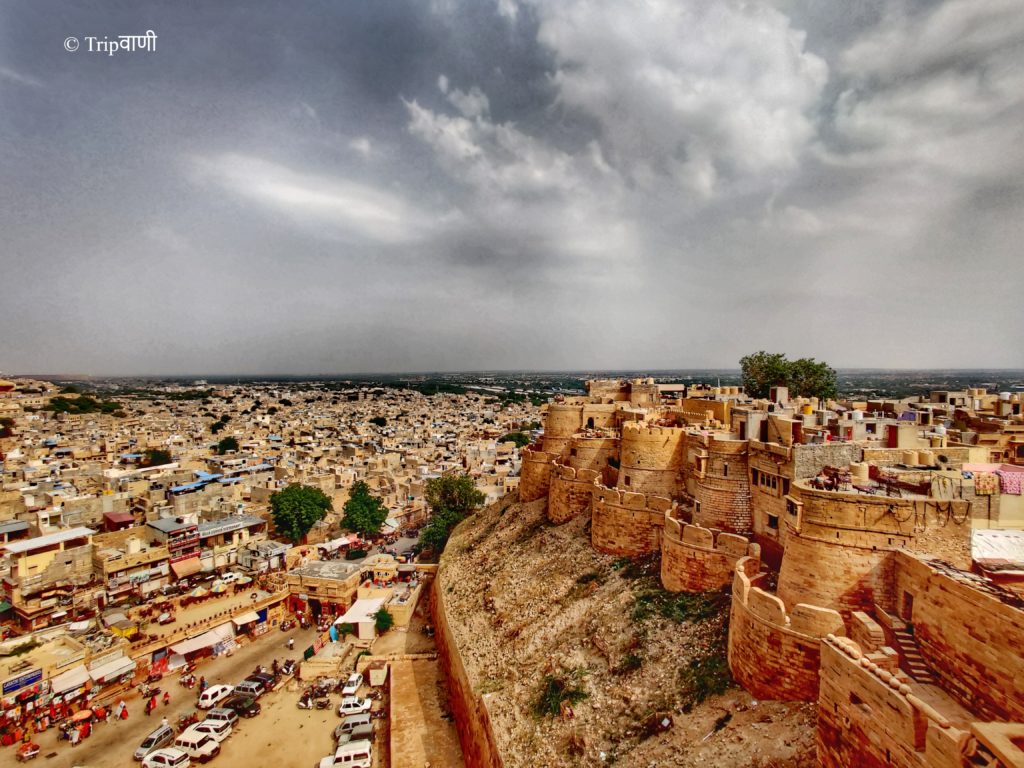
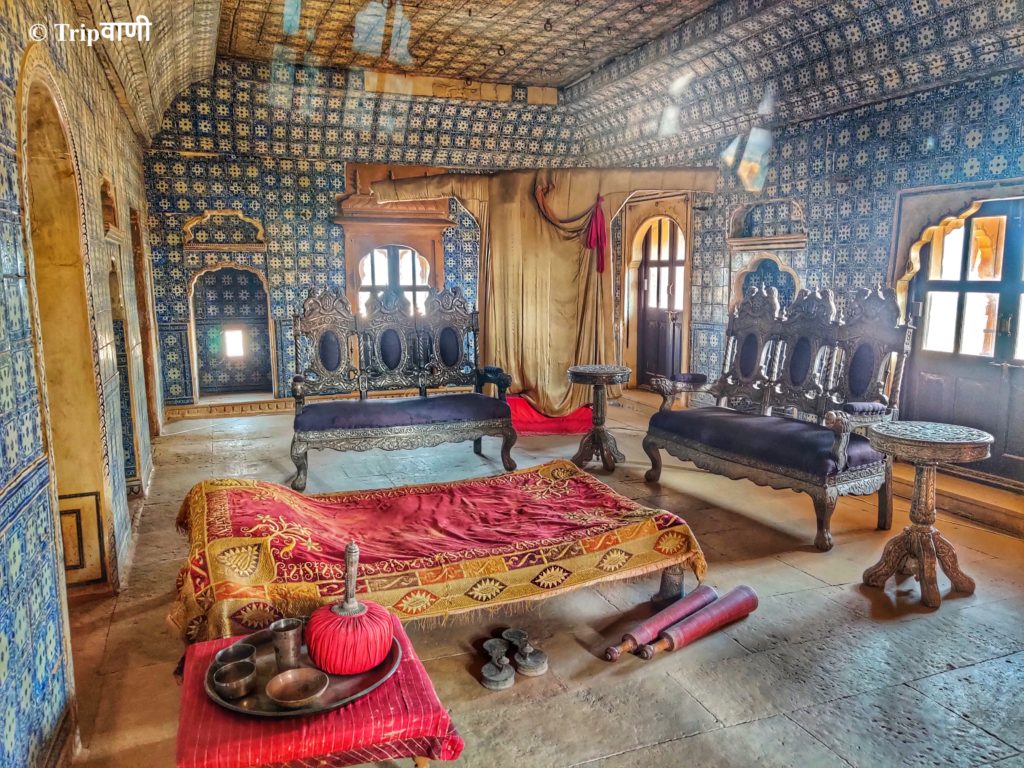
This fort ironically had a very tragic history. Sharing the same here (source: wikipedia).
Legend has it that the fort was built by Rawal Jaisal, a Bhati Rajput, in 1156 CE. The story says that it superseded an earlier construction at Lodhruva, with which Jaisal was dissatisfied. Thus, a new capital was established when Jaisal founded the city of Jaisalmer.
Around 1293-94 CE, Rawal Jethsi faced an eight to nine-year siege by Sultan Alauddin Khalji of Delhi, who is said to have been provoked by a Bhati raid on his treasure caravan. By the end of the siege, facing certain defeat, the Bhati Rajput women committed ‘jauhar’, and the male warriors met their fatal end in battle with the Sultan’s forces. For a few years after the successful siege, the fort remained abandoned, before being eventually reoccupied by some surviving Bhatis.
During Rawal Lunakaran’s reign, around 1530 – 1551 CE, the fort was attacked by an Afghan chief Amir Ali. When it seemed to the Rawal that he was fighting a losing battle, he slaughtered his womenfolk as there was insufficient time to arrange a jauhar. Tragically, reinforcements arrived immediately after the deed was done and the army of Jaisalmer became victorious in its defence of the fort.
In 1541 CE, Rawal Lunakaran also fought Mughal emperor Humayun when the latter attacked the fort on his way to Ajmer. He also offered his daughter in marriage to Akbar. Mughals controlled the fort till 1762.
The fort remained under the control of Mughals until 1762 when Maharawal Mulraj took control of the fort. Due to its isolated location, the fort escaped the ravages of the Marathas.
The treaty between the East India Company and Mulraj on 12 December 1818 allowed the Mulraj to retain control of the fort and provided for protection from invasion. After the death of Mulraj in 1820, his grandson Gaj Singh inherited control of the fort.
With the advent of British rule, the emergence of maritime trade and the growth of the port of Bombay led to the gradual economic decline of Jaisalmer. After independence and the Partition of India, the ancient trade route was totally closed, thus permanently removing the city from its former role of importance in international commerce. Nonetheless, the continued strategic importance of Jaisalmer was demonstrated during the 1965 and 1971 wars between India and Pakistan.
Now after the Fort, ask you tempo driver (if hired) to take you to the beautiful Patwon-ki-Haveli.
4. Patwon-Ki-Haveli: It is located in the main city. It was built by a famous trader named Guman Chand and his sons. This massive five-storied construction has five intricately decorated huge suites. The large corridors and the decorated walls are excellent representations of the art form that prevailed. The entire construction is made of yellow sandstone. The grandeur and the architecture of the monument add immense value to the cultural heritage of the city.
Out of the five havelis, one is converted into a museum. The third haveli houses the works of local craftsman of that era.
Spend not more than 60 minutes here.
Tickets: 20 INR for Indians and 100 INR for other nationalities plus 50 INR for still camera and 100 INR for videography.
Opening Timings: Open all days (9 AM – 5 PM).
5. Mandir Palace: Presently serving as a heritage hotel but there is a small area reserved as a museum. ‘Badal Vilas’, a unique tower like structure at Mandir Palace is the tallest structure in town below the hill-top city fort. This place was the living palace of former maharajas (kings) and is till maintained by his family. It lies in the center of the city near Sadar market.
The entry ticket to the museum/palace is INR 160, which I think is not justified since most of the space is occupied by the hotel (where you will not be allowed). You can definitely avoid going inside, just click pictures from outside and admire the beauty of architecture.
Do not spend more than 30 minutes here, as the next place is very important and a must visit.
6. Jaisalmer War Museum: The idea was conceived by Lieutenant General Bobby Mathews and constructed by the Desert Corps of the Indian Army.
It was dedicated to the Nation by Lieutenant General Ashok Singh on 24 August 2015. The Museum displays war exhibits which include vehicles and equipment captured during the course of operations in 1965 and 1971. This Museum has an Honour Wall engraved with the names of the Param Vir Chakra and Maha Vir Chakra gallantry award winners, two large Information Display Halls – Indian Army Hall and Laungewala Hall, an Audio Visual Room, a souvenir shop and a cafeteria. A Hunter Aircraft of the Indian Air Force, which destroyed enemy tank columns during the Battle of Laungewala is also displayed.
This is a must visit place and spend around 60-90 minutes here. It is located around 10 KMs from city center.
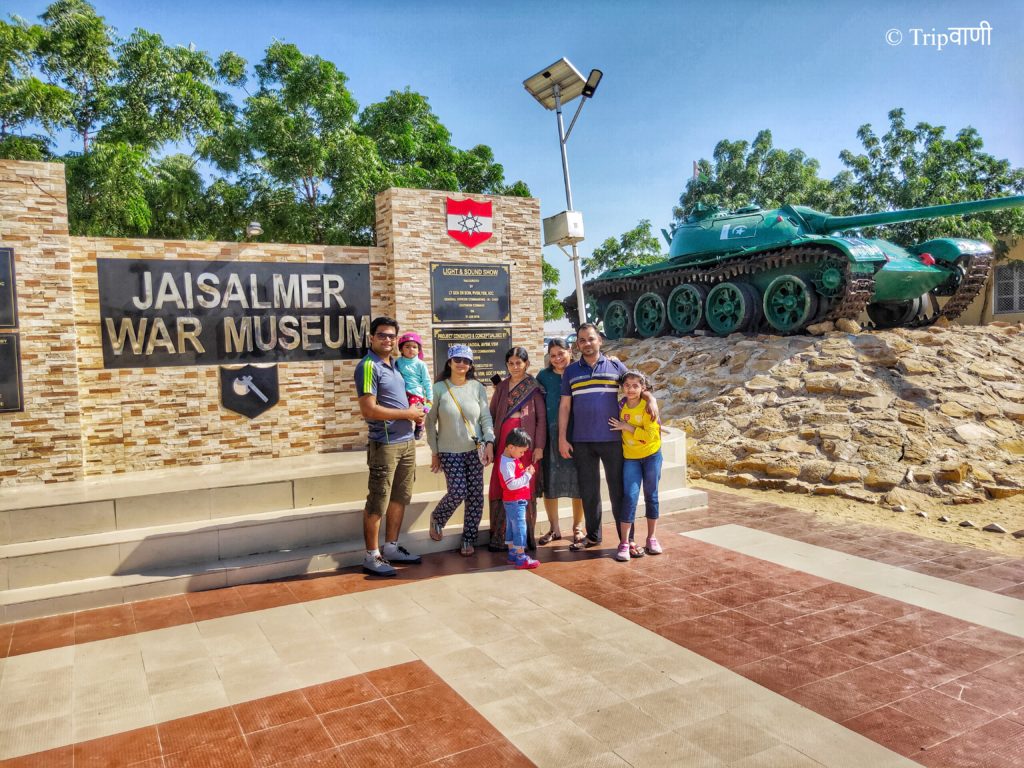
7. Gadisar Lake: If you have not visited this lake yesterday, now is the time then. Once you reach here, no one will be able to stop you from buying some cool local handicraft items.
It was constructed by the first ruler of the land, Raja Rawal Jaisal and later reconstructed by Maharawal Garsi in the year 1367 AD. The people of the desert city depended on this tank for their water needs. You will find temples, Holy shrines and Chattris around the banks of this lake. The artistically carved entrance made of yellow sandstone offers breathtaking view. You can enjoy boat ride here and enjoy the sunset. This is a must visit place during sunset.
That’s it from my side, you are free to go back to your hotel or depart from Jaisalmer. I have included best places above, there are many other attractions which you can visit if you want or have ample free time.
- Nathmal Ki Haveli
- Bada Bagh
- The Thar Heritage Museum
- Salim Singh Ki Haveli
- Kuldhara
Have a Nice Trip..Enjoy
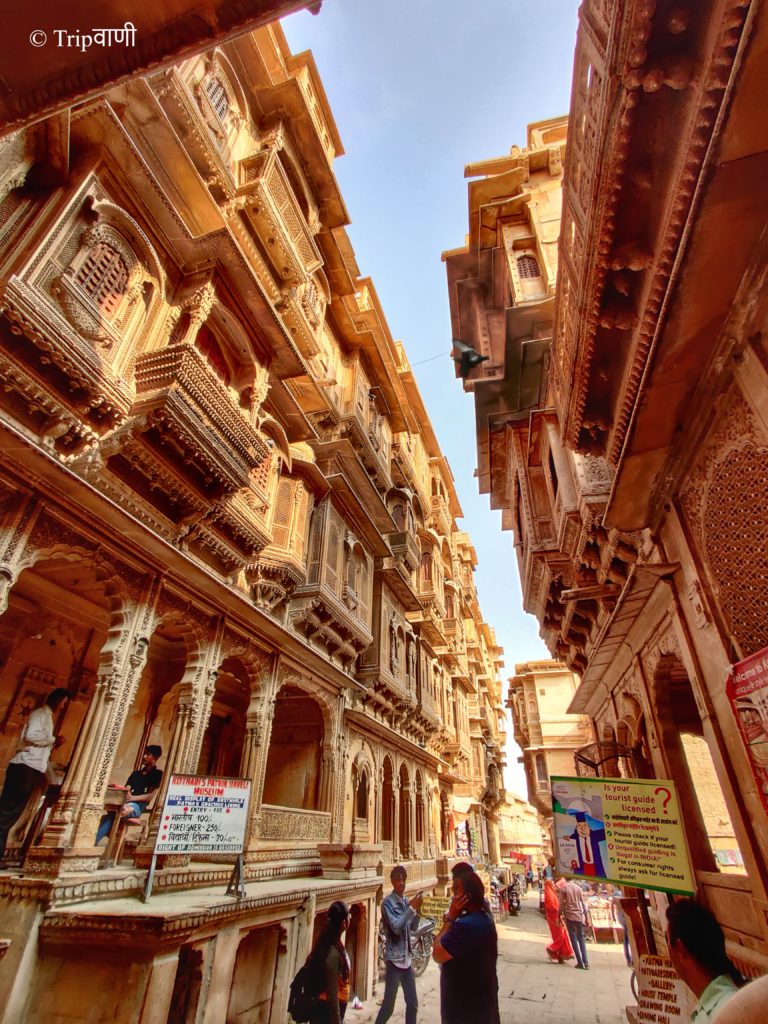
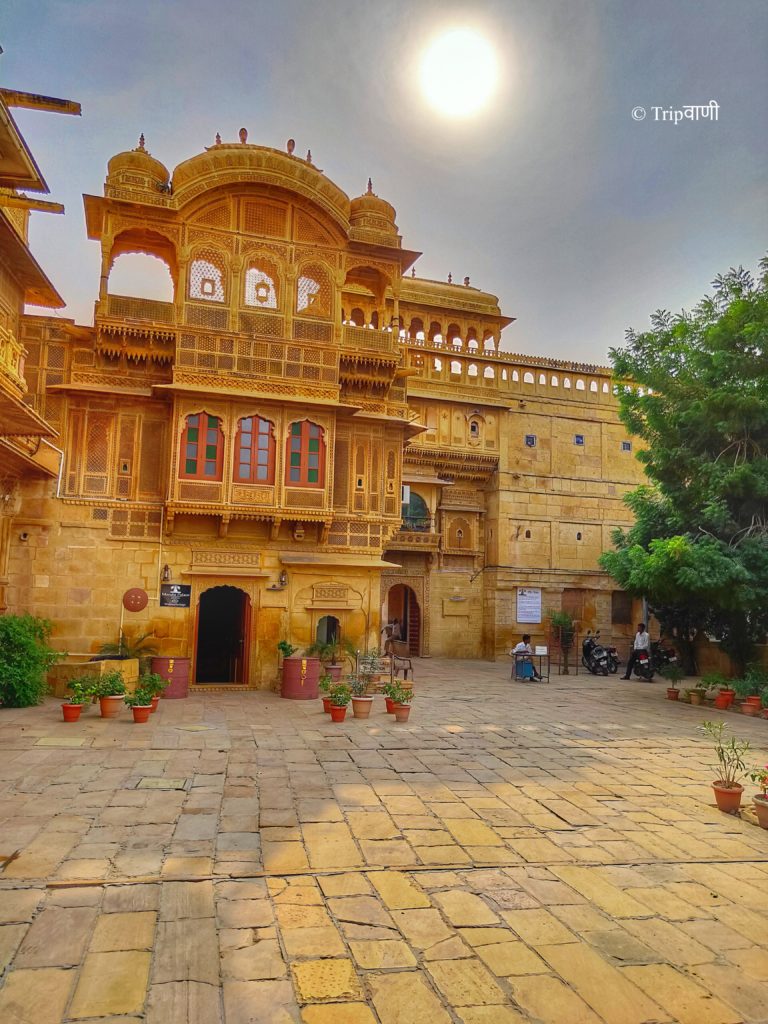
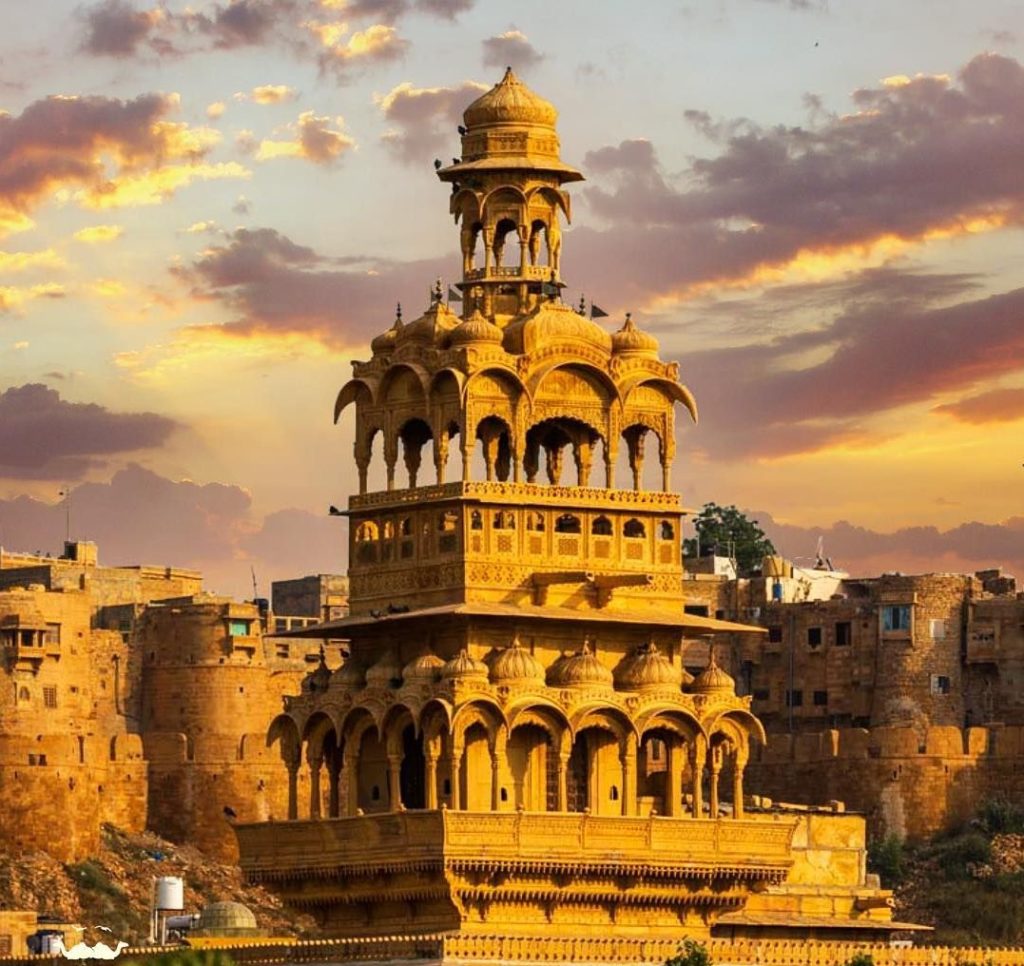
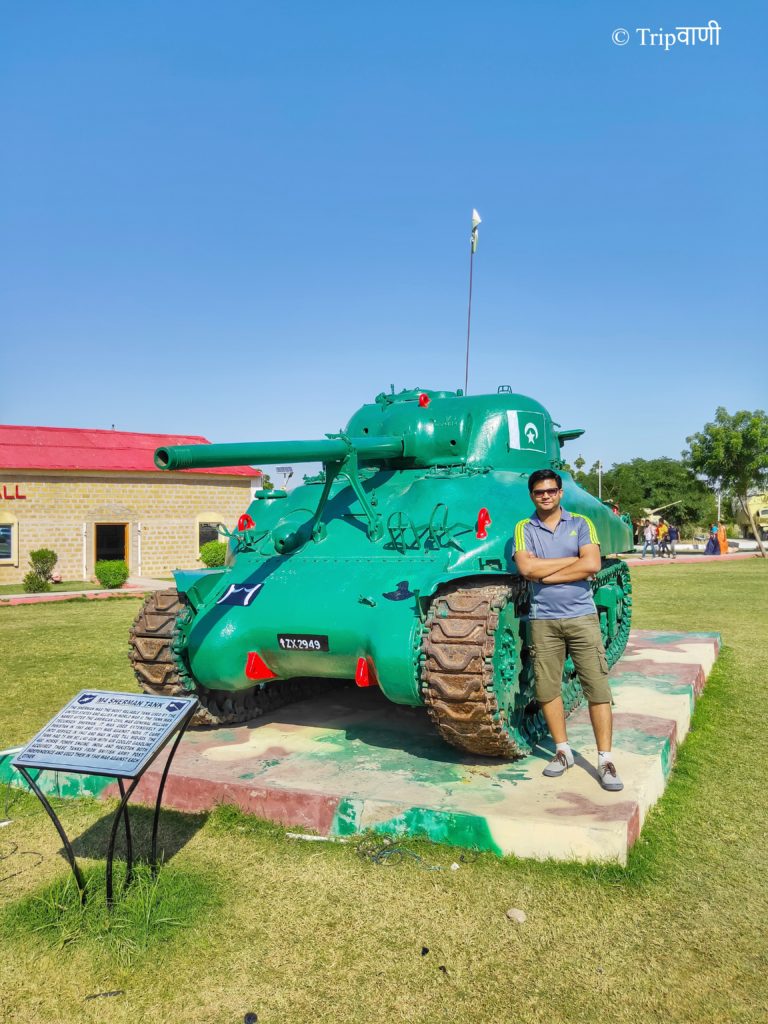
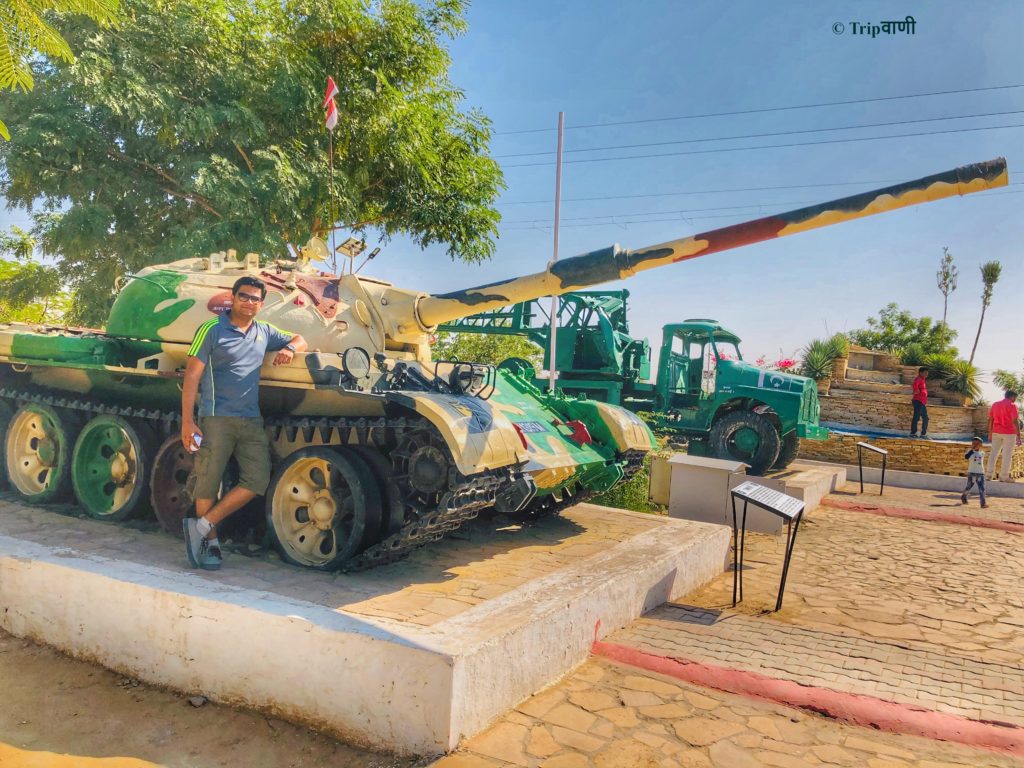
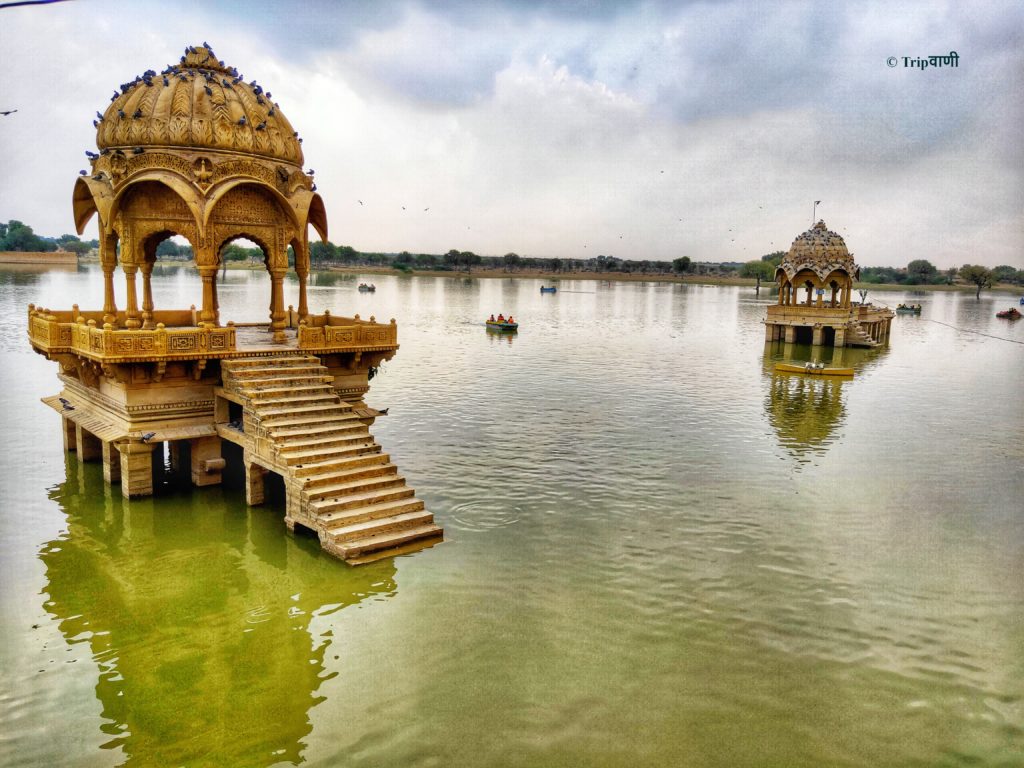
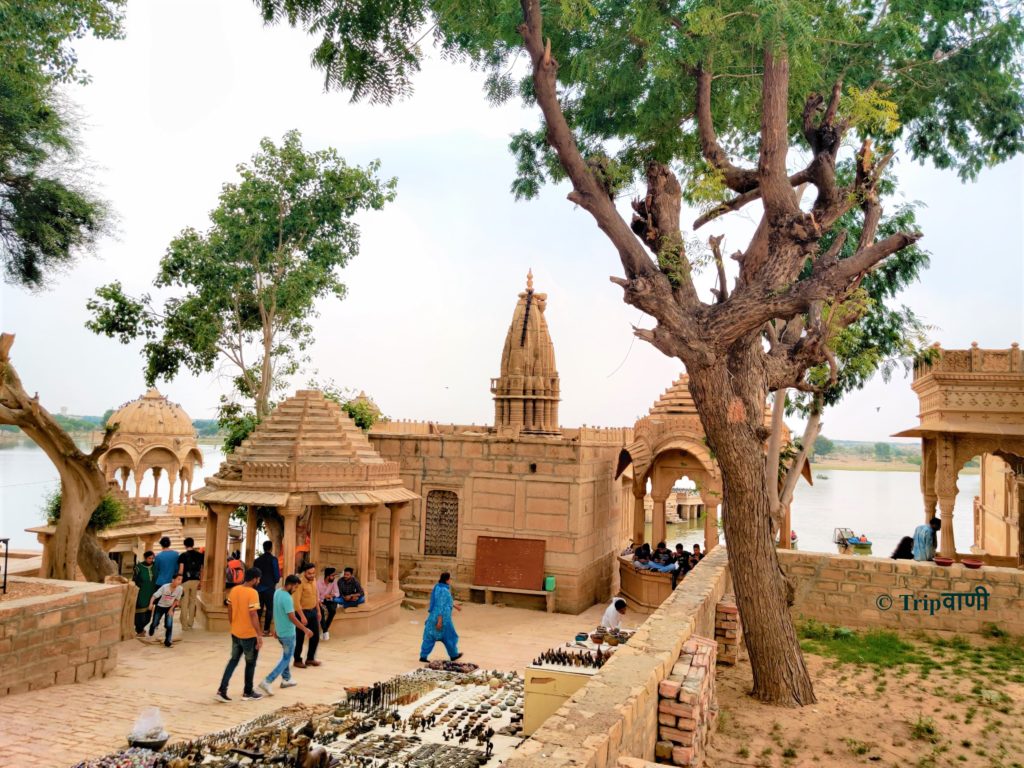
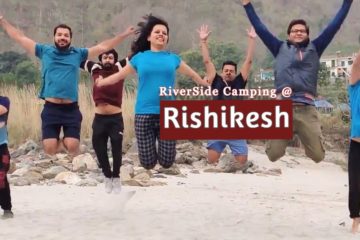
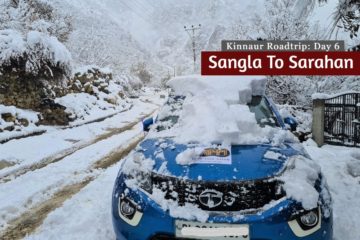
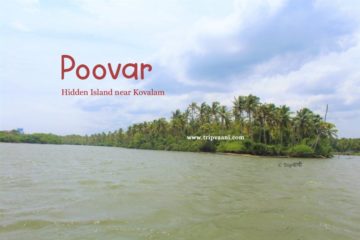
0 Comments